List of published articles

Linking radiocarbon and throphic webs in karstic groundwater ecosystems in the Yucatan Peninsula, Mexico.
C Solís, E M Chávez-Solís, M Rodríguez-Ceja, C G Méndez-García, E Ortíz, C Canto, M A Martínez-Carrillo y M Mascaró
January 17, 2023
Stable isotopes have been used historically to track food webs. Our approach used a combination of δ13C and radiocarbon (14C) dating to identify carbon sources in cave shrimp within caves of the Karstic Yucatan Peninsula, Mexico. Three sister species of stygobitic Typhlatya shrimps were collected from the cenote pool (cenote hereafter), cavern and cave hydro regions. New and previously reported 14C and δ13C values of whole tissues from the organisms were determined at the AMS laboratory (LEMA) of the Institute of Physics of the Universidad Nacional Autónoma de México. This new set of isotopic values of biomass and potential sources were incorporated into the Bayesian Mixing Modeling Software SIAR. In two hypothetical scenarios, the contribution from each feeding source among three species of the Typhlatya genus was determined. Slight differences were also observed between isotopic values of two groups of the same species collected in two distant cenote pools, suggesting this species may feed on a wider array of sources than previously found, and that the oligotrophic environment may have a strong influence on cave shrimp diet.

Morphology of the feeding apparatus of cave shrimp of the genus Typhlatya (Decapoda: Atyidae) from the Yucatan Peninsula and comparison with epigean species
Ivonne Trejo-Ventura, Gema Armendáriz, José Luis Villalobos, Fernando Álvarez
May 23, 2023
Using micrographs obtained from SEM, the arrangement of the bristles on the dactyle and propodium of pereiopods 1 and 2, defined here as the feeding apparatus, of 3 species of cave shrimp of the genus Typhlatya (T. mitchelli, T. .pearsei, T.dzilamensis) from the Yucatán Peninsula. The mushrooms were classified according to their morphology and position on the propodium and dactyl, resulting in 6 main types. The 3 Typhlatya species differed slightly in the number of each type of mushroom and showed some morphological variations, especially in the central setae. A comparison of the setal arrangement of Typhlatya spp. with that of the epigean species Potimirim mexicana and P. glabra, showed important differences probably generated by specialization to a certain habitat.

Use of Microbiological and Chemical Data to Evaluate the Effects of Tourism on Water Quality in Karstic Cenotes in Yucatan
Flor Arcega-Cabrera, Karina León-Aguirre, Fernando Enseñat-Soberanis, Germán Giácoman-Vallejos, Gabriela Rodríguez-Fuentes, Ismael Oceguera-Vargas, Elizabeth Lamas-Cosío & Nuno Simoes
June 23, 2023
Cenotes are spectacular karst formations in Yucatan, Mexico, often used for recreation. However, their impact on water quality has yet to be explored in detail. Therefore, during Easter, water samples were collected from four cenotes to identify variations in water quality associated with the presence of tourists. PCO of water quality, before (PH) and during Holy Week (HW) in 2019, explained 49.02% of the total variation. The indicators contributing to the first principal coordinate’s variation were Sr, K, sulfate, and chloride (0.89). Whereas, alkalinity, temperature, conductivity, nitrate, and ORP contributed to the second PC. PERMANOVA indicated a significant interaction between “cenote” and “condition” factors, and post hoc paired comparisons indicated significant differences between PH and HW conditions. Significant correlations varied among the four cenotes as the result of hydrogeological differences. Whereas, numbers of visitors were correlated with at least one fecal-matter indicator, demonstrating anthropogenic influence on the cenotes’ water quality.

Extravisual opsins in the blind shrimp Creaseria morleyi: presence and expression
José R. Pérez-Calderón, Jorge A. Pérez-León, Nuno Simões, Marisela Aguirre-Ramírez, Roxana E. Malpica-Calderón, Alejandro Botello
November 10, 2023
The presence of a long-wavelength sensitive (LWS) opsin gene was demonstrated in the stygobitic crustacean Creaseria morleyi (Creaser, 1936) by PCR readings from genomic DNA. In order to find the expression of this gene in extraocular tissue, shrimps were collected and placed in a tank to expose them to light/dark conditions for a period of 72 hours, and immediately after, sacrificed and sampled for RNA in the eyes, cephalothorax, abdomen, and sixth abdominal segment plus uropods. The transcripts of the LWS opsin gene were found in the eyes and abdomen of individuals exposed to light. The expression of these opsins could be involved in extravisual functions such as synchronization of their biological processes with environmental cycles related to diurnal vertical migration.

New distribution records of subterranean crustaceans from cenotes in Yucatan (Mexico).
Dorottya Angyal, Efraín M. Chávez-Solís, Luis A. Liévano-Beltrán, Benjamín Magaña, Nuno Simões, Maite Mascaró
February 12, 2022
This study demonstrates the need for integrative/interdisciplinary approaches when conducting biodiversity assessments in complex and poorly studied aquifers. This first integrative evaluation (i.e., molecular, morphological, broad geographic and type locality sampling, and environmental data) of Yucatán Typhlatya reveals considerable species identity conflict in prior phylogenetic assessments, broad species ranges, syntopy within cave systems, and five genetic lineages.
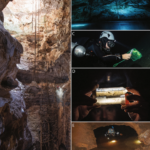
An integrative re‐evaluation of Typhlatya shrimp within the karst aquifer of the Yucatán Peninsula, Mexico
Lauren Ballou - David Brankovits - Efraín M. Chávez‐Solís - José M. Chávez Díaz - Brett C. Gonzalez - Shari Rohret - Alexa Salinas - Arielle Liu - Nuno Simões - Fernando Álvarez - Maria Pia Miglietta - Thomas M. Iliffe - Elizabeth Borda
March 29, 2022
This study demonstrates the need for integrative/interdisciplinary approaches when conducting biodiversity assessments in complex and poorly studied aquifers. This first integrative evaluation (i.e., molecular, morphological, broad geographic and type locality sampling, and environmental data) of Yucatán Typhlatya reveals considerable species identity conflict in prior phylogenetic assessments, broad species ranges, syntopy within cave systems, and five genetic lineages.

Physiological characterization of Typhlatya cave shrimps: linking habitat with aerobic metabolism
Efraín M. Chávez-Solís, Fernando Díaz, Kurt Paschke, Denise Re, Carlos Rosas, Gabriela Rodríguez-Fuentes, Nelly Tremblay y Maite Mascaró
July 29, 2022
Here we describe physiological aspects of three of the most abundant and widespread Typhlatya species that thrive in the fresh and marine groundwater habitats of the anchialine ecosystem of the Yucatan Peninsula.

Benthic species assemblages change through a freshwater cavern-type cenote in the Yucatán Peninsula, Mexico
Dorottya Angyal, Sergio Cohuo , José Manuel Castro-Pérez, Maite Mascaró, Carlos Rosas
August 11, 2022
We studied benthic assemblages through X-Batún, a continental freshwater cenote and its associated submerged cave located in San Antonio Mulix (Yucatán, Mexico). Using cave diving techniques, we collected sediment samples at four zones of the system. We extracted and counted individuals of benthic species in three replicates of 5 grams of wet sediment at each site. The biological composition was integrated by 15 species from eight higher taxonomic groups. Non-metric multidimensional scaling distinguished four assemblages that coincided with surface, open water, cavern and cave zones. ANOSIM test revealed significant differences between the assemblages. In the deeper zones of the cenote characterized by twilight and total darkness, Ostracoda and Gastropoda show the highest diversity and abundance, with practical absence in surface sediments. This pattern may suggest ecological interactions with chemosynthetic bacterial activity. Surface shows an assemblage typical of epigean environments. Environmental variables along the cenote varied little from the upper layers to bottom. Linear correlation and detrended canonical analysis revealed that light is the main driver of benthic species assemblages. Temperature, pH, and dissolved oxygen exert higher influence at individual biological benthic assemblage in X-Batún.
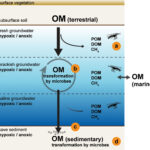
Editorial: The effects of environmental change on anchialine ecosystems
Mejía-Ortíz, Luis M, Chávez-Solís, Efraín M, Brankovits, David
September 14, 2022
This Research Topic was established with the aim to bring together the most recent outcomes and advances from a variety of scientific disciplines that link spatial and temporal changes in the environment to biogeochemical, ecological, and physiological changes at different biological scales in anchialine ecosystems, from microbes and macrofauna to habitat level. We have received contributions from disciplines spanning paleoecology, microbiology, biogeochemistry, and ecophysiology from four geographical regions around the world (Australia, Bermuda, The Bahamas, and the Yucatan Peninsula). Specifically, these studies aimed at characterizing the limits of physiological adaptations of cave-adapted crustaceans, the drivers of organic matter inputs over time, and how organic matter availability regulates microbial community structure and meiofauna assemblages. These contributions expand our understanding of anchialine ecosystem functioning and enable better predictions of future ecological changes within these coastal aquifer habitats.

Subterranean Waters of Yucatán Peninsula, Mexico RevealEpigean Species Dominance and Intraspecific Variability inFreshwater Ostracodes (Crustacea: Ostracoda)
Laura Macario-González - Sergio Cohuo - Dorottya Angyal - Liseth Pérez - Maite Mascaró
January 24, 2021
In order to gain insights into the biological evolution of the subterranean environments of the Yucatan Peninsula, we evaluated the ostracode species composition of caves and cenotes in five independent sampling campaigns (2008, 2013, 2017–2019).
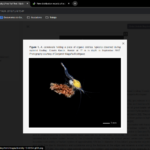
Updated Distribution of the Mysid Antromysis cenotensis (Crustacea: Peracarida), a Protected Key Species in Yucatan Peninsula Cenotes
Luis Arturo Liévano-Beltrán - Nuno Simões
March 21, 2021
We present 52 new geographic location records for the peracarid crustacean Antromysis cenotensis Creaser, 1936, endemic in cenotes of the Yucatan Peninsula, Mexico. This species is currently considered threatened and, therefore, is protected by Mexican law.

A new locality and phylogeny of the stygobitic Typhlatya shrimps for the Yucatan Peninsula
Luis Espinasa - Efraín M. Chávez Solís - Maite Mascaró - Carlos Rosas - Nuno Simoes - Gregory Violette
February 12, 2020
Typhlatya is a genus of small, stygobitic shrimp in the family Atyidae. Species in this genus are found in subterranean anchialine habitats, and they span salt, brackish and fresh waters. None have been reported in the open sea (Botello et al. 2013).
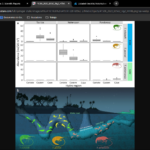
Distribution patterns, carbon sources and niche partitioning in cave shrimps (Atyidae: Typhlatya)
Efráin Chávez-Solís, Corina Solís, Nuno Simôes, Maire Mascaró
July 30, 2020
Cave shrimps of the Typhlatya genus are common and widespread in fresh, brackish and marine groundwater throughout the Yucatan Peninsula (Mexico). These species are ideal models to test niche partitioning within sympatric species in oligotrophic systems.

Uptaded checklist, historical overview and illustrated guide to the stygobiont Malacostraca (Arthropoda: Crustacea) species of Yucatan (Mexico)
Dorottya Angyal - Nuno Simoes - Maite Mascaró
November 30, 2020
This study provides an updated checklist and an illustrated guide to the 17 currently known stygobiont Malacostraca species of the state of Yucatan (Yucatan Peninsula, Mexico)
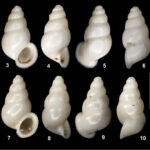
First record of subterranean freshwater gastropods (Mollusca, Gastropoda, Cochliopidae) from the cenotes of Yucatán state
Jozef Grego - Dorottya Angyal - Luis Arturo Liévano Beltrán
February 18, 2019
The biospeleological investigations of several cenotes in the eastern region of Yucatán state, Mexico, during January 2018 yielded, among other invertebrates, two new truncatelloid gastropod species described here in as Mexicenotica xochii gen. n. et sp. n. and Pyrgophorus thompsoni sp. n. Both species represent the first record of stygobiont gastropod species from the cenotes of Yucatán indicating the high biodiversity potential of the studied area.

Predatory behavior of the cave shrimp Creaseria morleyi (Creaser, 1936) (Caridea: Palaemonidae), the blind hunter of the Yucatán cenotes, Mexico
Efraín M. Chávez-Solís - Luis M. Mejía-Ortíz - Nuno Simões
January 7, 2018
The predatory behavior of C. morleyi is here described for the first time, verifying its classification as a predator. A variety of prey targets, including the atyid shrimp Typhlatya sp., were used to demonstrate predation and saprophagous feeding behavior in C. morleyi using in vitro and in situ observations.

Mayaweckelia troglomorpha, a new subterranean amphipod species from Yucatán state, México (Amphipoda, Hadziidae)
Dorottya Angyal - Efraín Chávez Solís - Benjamín Magaña - Gergely Balázs - Nuno Simoes
February 6, 2018
A detailed description of a new stygobiont species of the amphipod family Hadziidae, Mayaweckelia troglomorpha Angyal, sp. n. is given, based on material collected in four cenotes of Yucatán federal state, México.
- 2023
-

Linking radiocarbon and throphic webs in karstic groundwater ecosystems in the Yucatan Peninsula, Mexico.
C Solís, E M Chávez-Solís, M Rodríguez-Ceja, C G Méndez-García, E Ortíz, C Canto, M A Martínez-Carrillo y M Mascaró
January 17, 2023
Stable isotopes have been used historically to track food webs. Our approach used a combination of δ13C and radiocarbon (14C) dating to identify carbon sources in cave shrimp within caves of the Karstic Yucatan Peninsula, Mexico. Three sister species of stygobitic Typhlatya shrimps were collected from the cenote pool (cenote hereafter), cavern and cave hydro regions. New and previously reported 14C and δ13C values of whole tissues from the organisms were determined at the AMS laboratory (LEMA) of the Institute of Physics of the Universidad Nacional Autónoma de México. This new set of isotopic values of biomass and potential sources were incorporated into the Bayesian Mixing Modeling Software SIAR. In two hypothetical scenarios, the contribution from each feeding source among three species of the Typhlatya genus was determined. Slight differences were also observed between isotopic values of two groups of the same species collected in two distant cenote pools, suggesting this species may feed on a wider array of sources than previously found, and that the oligotrophic environment may have a strong influence on cave shrimp diet.

Morphology of the feeding apparatus of cave shrimp of the genus Typhlatya (Decapoda: Atyidae) from the Yucatan Peninsula and comparison with epigean species
Ivonne Trejo-Ventura, Gema Armendáriz, José Luis Villalobos, Fernando Álvarez
May 23, 2023
Using micrographs obtained from SEM, the arrangement of the bristles on the dactyle and propodium of pereiopods 1 and 2, defined here as the feeding apparatus, of 3 species of cave shrimp of the genus Typhlatya (T. mitchelli, T. .pearsei, T.dzilamensis) from the Yucatán Peninsula. The mushrooms were classified according to their morphology and position on the propodium and dactyl, resulting in 6 main types. The 3 Typhlatya species differed slightly in the number of each type of mushroom and showed some morphological variations, especially in the central setae. A comparison of the setal arrangement of Typhlatya spp. with that of the epigean species Potimirim mexicana and P. glabra, showed important differences probably generated by specialization to a certain habitat.

Use of Microbiological and Chemical Data to Evaluate the Effects of Tourism on Water Quality in Karstic Cenotes in Yucatan
Flor Arcega-Cabrera, Karina León-Aguirre, Fernando Enseñat-Soberanis, Germán Giácoman-Vallejos, Gabriela Rodríguez-Fuentes, Ismael Oceguera-Vargas, Elizabeth Lamas-Cosío & Nuno Simoes
June 23, 2023
Cenotes are spectacular karst formations in Yucatan, Mexico, often used for recreation. However, their impact on water quality has yet to be explored in detail. Therefore, during Easter, water samples were collected from four cenotes to identify variations in water quality associated with the presence of tourists. PCO of water quality, before (PH) and during Holy Week (HW) in 2019, explained 49.02% of the total variation. The indicators contributing to the first principal coordinate’s variation were Sr, K, sulfate, and chloride (0.89). Whereas, alkalinity, temperature, conductivity, nitrate, and ORP contributed to the second PC. PERMANOVA indicated a significant interaction between “cenote” and “condition” factors, and post hoc paired comparisons indicated significant differences between PH and HW conditions. Significant correlations varied among the four cenotes as the result of hydrogeological differences. Whereas, numbers of visitors were correlated with at least one fecal-matter indicator, demonstrating anthropogenic influence on the cenotes’ water quality.

Extravisual opsins in the blind shrimp Creaseria morleyi: presence and expression
José R. Pérez-Calderón, Jorge A. Pérez-León, Nuno Simões, Marisela Aguirre-Ramírez, Roxana E. Malpica-Calderón, Alejandro Botello
November 10, 2023
The presence of a long-wavelength sensitive (LWS) opsin gene was demonstrated in the stygobitic crustacean Creaseria morleyi (Creaser, 1936) by PCR readings from genomic DNA. In order to find the expression of this gene in extraocular tissue, shrimps were collected and placed in a tank to expose them to light/dark conditions for a period of 72 hours, and immediately after, sacrificed and sampled for RNA in the eyes, cephalothorax, abdomen, and sixth abdominal segment plus uropods. The transcripts of the LWS opsin gene were found in the eyes and abdomen of individuals exposed to light. The expression of these opsins could be involved in extravisual functions such as synchronization of their biological processes with environmental cycles related to diurnal vertical migration.
- 2022
-

New distribution records of subterranean crustaceans from cenotes in Yucatan (Mexico).
Dorottya Angyal, Efraín M. Chávez-Solís, Luis A. Liévano-Beltrán, Benjamín Magaña, Nuno Simões, Maite Mascaró
February 12, 2022
This study demonstrates the need for integrative/interdisciplinary approaches when conducting biodiversity assessments in complex and poorly studied aquifers. This first integrative evaluation (i.e., molecular, morphological, broad geographic and type locality sampling, and environmental data) of Yucatán Typhlatya reveals considerable species identity conflict in prior phylogenetic assessments, broad species ranges, syntopy within cave systems, and five genetic lineages.

An integrative re‐evaluation of Typhlatya shrimp within the karst aquifer of the Yucatán Peninsula, Mexico
Lauren Ballou - David Brankovits - Efraín M. Chávez‐Solís - José M. Chávez Díaz - Brett C. Gonzalez - Shari Rohret - Alexa Salinas - Arielle Liu - Nuno Simões - Fernando Álvarez - Maria Pia Miglietta - Thomas M. Iliffe - Elizabeth Borda
March 29, 2022
This study demonstrates the need for integrative/interdisciplinary approaches when conducting biodiversity assessments in complex and poorly studied aquifers. This first integrative evaluation (i.e., molecular, morphological, broad geographic and type locality sampling, and environmental data) of Yucatán Typhlatya reveals considerable species identity conflict in prior phylogenetic assessments, broad species ranges, syntopy within cave systems, and five genetic lineages.

Physiological characterization of Typhlatya cave shrimps: linking habitat with aerobic metabolism
Efraín M. Chávez-Solís, Fernando Díaz, Kurt Paschke, Denise Re, Carlos Rosas, Gabriela Rodríguez-Fuentes, Nelly Tremblay y Maite Mascaró
July 29, 2022
Here we describe physiological aspects of three of the most abundant and widespread Typhlatya species that thrive in the fresh and marine groundwater habitats of the anchialine ecosystem of the Yucatan Peninsula.

Benthic species assemblages change through a freshwater cavern-type cenote in the Yucatán Peninsula, Mexico
Dorottya Angyal, Sergio Cohuo , José Manuel Castro-Pérez, Maite Mascaró, Carlos Rosas
August 11, 2022
We studied benthic assemblages through X-Batún, a continental freshwater cenote and its associated submerged cave located in San Antonio Mulix (Yucatán, Mexico). Using cave diving techniques, we collected sediment samples at four zones of the system. We extracted and counted individuals of benthic species in three replicates of 5 grams of wet sediment at each site. The biological composition was integrated by 15 species from eight higher taxonomic groups. Non-metric multidimensional scaling distinguished four assemblages that coincided with surface, open water, cavern and cave zones. ANOSIM test revealed significant differences between the assemblages. In the deeper zones of the cenote characterized by twilight and total darkness, Ostracoda and Gastropoda show the highest diversity and abundance, with practical absence in surface sediments. This pattern may suggest ecological interactions with chemosynthetic bacterial activity. Surface shows an assemblage typical of epigean environments. Environmental variables along the cenote varied little from the upper layers to bottom. Linear correlation and detrended canonical analysis revealed that light is the main driver of benthic species assemblages. Temperature, pH, and dissolved oxygen exert higher influence at individual biological benthic assemblage in X-Batún.

Editorial: The effects of environmental change on anchialine ecosystems
Mejía-Ortíz, Luis M, Chávez-Solís, Efraín M, Brankovits, David
September 14, 2022
This Research Topic was established with the aim to bring together the most recent outcomes and advances from a variety of scientific disciplines that link spatial and temporal changes in the environment to biogeochemical, ecological, and physiological changes at different biological scales in anchialine ecosystems, from microbes and macrofauna to habitat level. We have received contributions from disciplines spanning paleoecology, microbiology, biogeochemistry, and ecophysiology from four geographical regions around the world (Australia, Bermuda, The Bahamas, and the Yucatan Peninsula). Specifically, these studies aimed at characterizing the limits of physiological adaptations of cave-adapted crustaceans, the drivers of organic matter inputs over time, and how organic matter availability regulates microbial community structure and meiofauna assemblages. These contributions expand our understanding of anchialine ecosystem functioning and enable better predictions of future ecological changes within these coastal aquifer habitats.
- 2021
-

Subterranean Waters of Yucatán Peninsula, Mexico RevealEpigean Species Dominance and Intraspecific Variability inFreshwater Ostracodes (Crustacea: Ostracoda)
Laura Macario-González - Sergio Cohuo - Dorottya Angyal - Liseth Pérez - Maite Mascaró
January 24, 2021
In order to gain insights into the biological evolution of the subterranean environments of the Yucatan Peninsula, we evaluated the ostracode species composition of caves and cenotes in five independent sampling campaigns (2008, 2013, 2017–2019).

Updated Distribution of the Mysid Antromysis cenotensis (Crustacea: Peracarida), a Protected Key Species in Yucatan Peninsula Cenotes
Luis Arturo Liévano-Beltrán - Nuno Simões
March 21, 2021
We present 52 new geographic location records for the peracarid crustacean Antromysis cenotensis Creaser, 1936, endemic in cenotes of the Yucatan Peninsula, Mexico. This species is currently considered threatened and, therefore, is protected by Mexican law.
- 2020
-

A new locality and phylogeny of the stygobitic Typhlatya shrimps for the Yucatan Peninsula
Luis Espinasa - Efraín M. Chávez Solís - Maite Mascaró - Carlos Rosas - Nuno Simoes - Gregory Violette
February 12, 2020
Typhlatya is a genus of small, stygobitic shrimp in the family Atyidae. Species in this genus are found in subterranean anchialine habitats, and they span salt, brackish and fresh waters. None have been reported in the open sea (Botello et al. 2013).

Distribution patterns, carbon sources and niche partitioning in cave shrimps (Atyidae: Typhlatya)
Efráin Chávez-Solís, Corina Solís, Nuno Simôes, Maire Mascaró
July 30, 2020
Cave shrimps of the Typhlatya genus are common and widespread in fresh, brackish and marine groundwater throughout the Yucatan Peninsula (Mexico). These species are ideal models to test niche partitioning within sympatric species in oligotrophic systems.

Uptaded checklist, historical overview and illustrated guide to the stygobiont Malacostraca (Arthropoda: Crustacea) species of Yucatan (Mexico)
Dorottya Angyal - Nuno Simoes - Maite Mascaró
November 30, 2020
This study provides an updated checklist and an illustrated guide to the 17 currently known stygobiont Malacostraca species of the state of Yucatan (Yucatan Peninsula, Mexico)
- 2019
-

First record of subterranean freshwater gastropods (Mollusca, Gastropoda, Cochliopidae) from the cenotes of Yucatán state
Jozef Grego - Dorottya Angyal - Luis Arturo Liévano Beltrán
February 18, 2019
The biospeleological investigations of several cenotes in the eastern region of Yucatán state, Mexico, during January 2018 yielded, among other invertebrates, two new truncatelloid gastropod species described here in as Mexicenotica xochii gen. n. et sp. n. and Pyrgophorus thompsoni sp. n. Both species represent the first record of stygobiont gastropod species from the cenotes of Yucatán indicating the high biodiversity potential of the studied area.
- 2018
-

Predatory behavior of the cave shrimp Creaseria morleyi (Creaser, 1936) (Caridea: Palaemonidae), the blind hunter of the Yucatán cenotes, Mexico
Efraín M. Chávez-Solís - Luis M. Mejía-Ortíz - Nuno Simões
January 7, 2018
The predatory behavior of C. morleyi is here described for the first time, verifying its classification as a predator. A variety of prey targets, including the atyid shrimp Typhlatya sp., were used to demonstrate predation and saprophagous feeding behavior in C. morleyi using in vitro and in situ observations.

Mayaweckelia troglomorpha, a new subterranean amphipod species from Yucatán state, México (Amphipoda, Hadziidae)
Dorottya Angyal - Efraín Chávez Solís - Benjamín Magaña - Gergely Balázs - Nuno Simoes
February 6, 2018
A detailed description of a new stygobiont species of the amphipod family Hadziidae, Mayaweckelia troglomorpha Angyal, sp. n. is given, based on material collected in four cenotes of Yucatán federal state, México.
